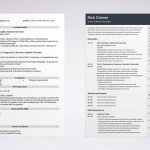Does it appear like the resumes you submit online vanish into a dark gap? You’re not the only one. Most employment searchers applying for job or jobs online never receive to such an extent as an email consequently.
So how precisely are individuals catching offers?
All things considered, I’ll let you in on a mystery: The general population who arrive positions nowadays progressively get them through individual referrals from companions who work for bosses with employment opportunities. A 2012 Federal Reserve Bank of New York concentrate found that alluded hopefuls were twice as prone to get meetings and 40 percent more inclined to be enlisted than different competitors.

(MORE: HOW TO WRITE A RESUME – ANALYSE YOUR RESUME EASILY)
So in case you’re not doing everything you can to get a referral, you’re not searching for work viably. I’ll give you a few pointers in a moment.
Referrals Are More Important Than Ever
Representative referrals have been a piece of the procuring procedure for quite a long time. However, as per a current New York Times article, “In Hiring, a Friend in Need Is a Prospect, Indeed,” representative suggestions have turned into the key that opens the entryway.
Specialists at bookkeeping goliath Ernst and Young, for instance, have been in charge of 45 percent of non-section level situations, up from 28 percent in 2010, the article said. Different organizations, as Deloitte and Enterprise Rent-A-Car, offer prizes and money impetuses for workers who allude new contracts. Sodexo, a nourishment administration and offices administration firm, even has a portable application to let its workers effortlessly submit suggestions from their telephones.
(MORE: A PERFECT ANSWER TO MOST TERRIFYING INTERVIEW QUESTION)
Referrals Vs Work Postings
It’s straightforward why enlisting administrators have developed so reliant on referrals.
When I was an HR chief in the 1970s, I’d get perhaps 50 resumés, tops, each time I publicized a position. Today, when organizations post openings on the web, they’re deluged with hundreds (if not thousands) of resumés for everyone. (For additional on this, read Paul Bernard’s Next Avenue article on the good and bad approaches to utilize worksheets.)
Filtering through that pile of reactions takes a colossal measure of time and exertion. By difference, bosses can take advantage of their representatives’ LinkedIn systems to focus in on quality competitors in less time and with better outcomes.
Referrals and Job Discrimination
The terrible side of this pattern: Choosing new workers from referrals can be prejudicial. The Federal Reserve concentrate noticed that 71 percent of representatives who prescribed competitors named ones of their own race or ethnicity (which has a tendency to be white) and 63 percent supported their sexual orientation. That is a disturbing reality for minority hopefuls and, to some degree, ladies.
In addition, the contract by-referral hone makes it intense for the long haul unemployed to land another position. That is on account of the more you’re out of the workforce, the weaker your system has a tendency to be. Representatives are likewise frequently hesitant to allude companions who’ve been out of work for some time.
(MORE: CRACK ANY INTERVIEW IN JUST 24 HOURS PREPARATION)
4 Ways to Get More Referrals
Reasonable or not, organizations will keep on relying intensely on representative proposals for years to come. So here are four approaches to help get a referral that could prompt your next job:
1. Let People Know What You do for a Living
This sounds so basic, but it’s amazing how many people don’t explain their line of work to friends or contacts.
By simply making it a point to be more forthcoming about your professional life when you’re, say, getting a haircut or sitting on the sidelines at your daughter’s soccer game you’ll increase the number of people who might refer you for a job that’s right up your alley.
I’ve known of several cases where these types of conversations have led to people getting hired. Just last week, I started talking to a man sitting next to me on the train. He engaged me in a lively chat about his work, which resulted in my offering to introduce him to a potentially valuable job contact.
Remember to keep your “old” friends up-to-date on your professional world as well. Include a few lines about your current job (or the type of position you’d like) in your annual holiday letter, for instance.
2. Become an Active Player on LinkedIn
Still not on LinkedIn? Shame on you! These days, whether you’re working or looking for a job, you can’t afford to use LinkedIn. It’s the single most important professional networking site on the Internet.
Once you’ve created your LinkedIn Profile to promote your “personal brand” and set up your network, mine that network to find connections at your target employers. Then, email them to learn more about their companies and, when appropriate, ask for referrals.
You can also use LinkedIn to build goodwill, which could ultimately inspire your contacts to recommend you for openings where they work. Share articles, routinely participate in LinkedIn’s group discussions and send congratulatory notes to others in your network. This way, you’ll be on the radar of LinkedIn members whose firms are hiring.
3. Expand your In-Person Networks
As powerful as online networking is, it pales next to the effectiveness of meeting people in person.
Commit to getting out of the house on a regular basis: attend a conference, take a class or go to a local college alumni meeting. The more people who know you, like you and are familiar with your work, the greater the chance they’ll put in a good word for you.
Of course, meeting people is just the first step. You’ll need to work at networking by cultivating those relationships.
Add your new acquaintances to your online networks; ask them to get together over lunch or coffee; and always, always, always look for ways to help them before you ask for anything.
4. Volunteer
I think volunteering is a wonderful way to expand your network of influential people and let others see your skills in action. (Don’t forget to ask fellow volunteers to join your LinkedIn network.)
But don’t just volunteer for the sake of volunteering. Always pitch in when needed and offer to assist whenever the group needs a hand. You’ll develop a reputation as a reliable, hard worker.
Make an effort to engage in conversations with other volunteers, board members and executives at the nonprofit, too. Once they know you better and learn your capabilities, you can engage them in more substantive conversations about your career goals and job objectives.
Ultimately, this could convince them to refer you for a job at the nonprofit or anywhere else they work. Doing good as a volunteer could lead to someone doing something very, very good for you.
More from Skilled Guru:
[post_grid id=”906″]



Tremendous article must read worthful
Thanks for you Appreciation.
This article is indeed showing the right direction on getting hired in any field.
Thanks